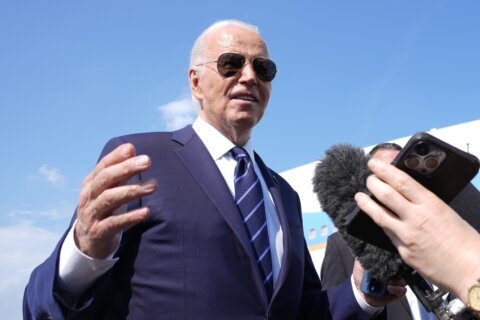When you’re shopping around for an exchange-traded fund (ETF) or mutual fund, there are two main types to consider based on how they’re managed.
The first type is actively managed funds. In this case, you’re paying a portfolio manager and possibly a team of research analysts to use their proprietary expertise, methodologies and models to pick stocks in an attempt to outperform a benchmark.
[Sign up for stock news with our Invested newsletter.]
The other option is passively managed funds. These funds replicate the constituents and weightings of a specific index, such as those provided by MSCI Inc. (ticker: MSCI) or S&P Global Inc. (SPGI). The goal here is to match the performance of the index rather than to outperform it.
So, which is better? Current data strongly favor the passive option– index funds –in terms of performance. According to the S&P Indices Versus Active (SPIVA) scorecard, over the past 15 years, approximately 88% of all U.S. large-cap funds have underperformed the S&P 500.
A big part of this underperformance is due to costs. Actively managed funds tend to charge higher management fees to cover the salaries of the portfolio managers and analysts, as well as additional trading, administrative and operating expenses. These higher expense ratios are directly deducted from returns every year.
Conversely, indexing is cost-effective. There’s no need for active oversight, much of the process can be automated, and the rigorous, rules-based indexes used are methodical and mechanical, minimizing errors and turnover and maximizing tax efficiency.
“The idea behind index investing is ‘if you can’t beat ’em, join ’em,'” says Robert Johnson, professor of finance at Creighton University’s Heider College of Business. “For the vast majority of investors, the KISS mantra — ‘keep it simple, stupid’ — should guide their investment philosophy.”
Here are 10 of the best low-cost index funds and ETFs to buy today:
| Fund | Expense Ratio |
| Vanguard Total World Stock Index Fund Admiral Shares (VTWAX) | 0.10% |
| Vanguard 500 Index Fund Admiral Shares (VFIAX) | 0.04% |
| Fidelity Nasdaq Composite Index ETF (ONEQ) | 0.21% |
| SPDR Portfolio S&P 500 ETF (SPLG) | 0.03% |
| Vanguard Total Stock Market ETF (VTI) | 0.03% |
| Vanguard Total International Stock Index Fund Admiral Shares (VTIAX) | 0.12% |
| iShares Core Total USD Bond Market ETF (IUSB) | 0.06% |
| Schwab Total Stock Market Index Fund (SWTSX) | 0.03% |
| Vanguard Dividend Appreciation ETF (VIG) | 0.06% |
| iShares Core Dividend ETF (DIVB) | 0.05% |
Vanguard Total World Stock Index Fund Admiral Shares (VTWAX)
“Beating the market is a zero-sum game — it’s impossible for all investors in aggregate to outperform the market, as investors can’t all be above average,” says Rodney Comegys, global head of the equity indexing group at Vanguard. To track the global market’s average return, consider VTWAX.
For a 0.1% expense ratio, VTWAX holds more than 9,800 market cap-weighted U.S., international developed and emerging market stocks as represented by the FTSE Global All Cap Index. It features a low, tax-efficient turnover rate of just 4.3%. It is also available as the Vanguard Total World Stock ETF (VT).
Vanguard 500 Index Fund Admiral Shares (VFIAX)
“Index funds can help investors achieve long-term success through their low costs, broad diversification, low turnover and relative predictability,” Comegys says. If you believe in the SPIVA results, then a low-cost S&P 500 index fund like VFIAX can be an excellent long-term core holding.
The passive indexing strategy used by VFIAX results in a very low 0.04% expense ratio and a 2.2% portfolio turnover rate. However, there is a $3,000 minimum investment. To avoid this, you can buy the Vanguard S&P 500 ETF (VOO) for a 0.03% expense ratio at around $500 per share.
Fidelity Nasdaq Composite Index ETF (ONEQ)
“The returns of the market have been driven by a small percentage of big winners,” Johnson says. “For most, trying to pick winners ex-ante is a loser’s game, so the solution is to invest in diversified index funds where you don’t have to pick the winners.” A great example is ONEQ.
ONEQ’s benchmark index is the Nasdaq composite, which currently holds more than 1,000 market cap-weighted, Nasdaq-listed stocks. By buying this ETF, you get exposure to all seven of the “Magnificent Seven” stocks in the top holdings for a 0.21% expense ratio and a tax-efficient 0.5% 30-day SEC yield.
SPDR Portfolio S&P 500 ETF (SPLG)
“Just as how the stock market returns compound, the deleterious effects of high fees and transaction costs also stack up over time,” Johnson says. “In fact, the late founder and chairman of Vanguard, John Bogle, termed this phenomenon ‘the tyranny of compounding costs.'”
The cheapest S&P 500 ETF in the market right now is currently SPLG. Part of SPDR’s low-cost “Portfolio” lineup, SPLG charges a 0.02% expense ratio, or $2 in annual fees for a $10,000 investment. It is also great for smaller accounts and new investors with a price of around $64 per share.
Vanguard Total Stock Market ETF (VTI)
“Broad diversification is a fundamental component of indexing, and when it comes to U.S. stocks, it doesn’t get much more diversified than VTI,” Comegys says. “VTI holds more than 3,700 stocks covering nearly 100% of the investable U.S. stock market and is a core building block in many portfolios.”
Because it is market cap-weighted, VTI’s top holdings are very similar to that of VFIAX. However, the ETF is technically more diversified as its benchmark, the CRSP U.S. Total Market Index, also holds thousands of additional mid- and small-cap stocks. Investors can expect a low 0.03% expense ratio and 2.2% turnover.
[READ: 5 Best Charles Schwab Money Market Funds]
Vanguard Total International Stock Index Fund Admiral Shares (VTIAX)
“Broad-market index funds use highly efficient investment strategies with minimal portfolio turnover, which means fewer taxable capital gains distributions for investors,” Comegys says. This can be seen with VTIAX, which holds a portfolio of more than 8,500 international stocks with a 3.9% turnover rate.
VTIAX’s benchmark, the FTSE Global All Cap ex U.S. Index, is diversified across both international developed and global markets. With a 0.12% expense ratio, pairing this fund with VTI or VFIAX is an easy way to obtain a low-cost, globally diversified portfolio as an alternative to buying VTWAX.
iShares Core Total USD Bond Market ETF (IUSB)
“It is possible to build a simple, diversified portfolio with just two ETFs: a broad-market equity index ETF and a diversified bond index ETF,” says Brian Huckstep, chief investment officer at Advyzon Investment Management. For example, a great complement for VTI in a U.S.-centric portfolio is IUSB.
IUSB tracks the Bloomberg U.S. Universal Index, which holds more than 16,100 Treasurys, mortgage-backed securities, investment-grade corporate bonds, agency bonds and even a small allocation to higher-yield “junk” bonds. The ETF charges a 0.06% expense ratio and pays a 5% 30-day SEC yield.
Schwab Total Stock Market Index Fund (SWTSX)
If you prefer to automate contributions and stay hands-off by avoiding trading, a mutual fund may be better than an ETF. “All else being equal in terms of benchmark and fees, I always prefer a mutual fund,” Huckstep says. “This is because trading ETFs involves a bid-ask spread, which is an implicit cost.”
Another low-cost index mutual fund competitor to VTI to watch is SWTSX. This fund tracks the Dow Jones U.S. Total Stock Market Index, which is very similar to the CRSP U.S. Total Market Index in terms of performance and composition. It also charges the same low 0.03% expense ratio as VTI does.
Vanguard Dividend Appreciation ETF (VIG)
“A consistently increasing dividend can be a signal of a firm’s strong balance sheet, disciplined capital allocation and commitment to returning value to shareholders,” Comegys says. To access these stocks, Vanguard offers the VIG ETF at a 0.06% expense ratio, paying a 1.8% 30-day SEC yield.
VIG’s benchmark, the S&P U.S. Dividend Growers Index, is composed of around 340 blue-chip stocks screened for 10-year history of consecutive dividend growth. Names you might recognize include Apple Inc. (AAPL), Microsoft Corp. (MSFT), JPMorgan Chase & Co. (JPM) and ExxonMobil Corp. (XOM).
iShares Core Dividend ETF (DIVB)
Dividends are an important driver of stock returns, but not the only one. Buybacks, where companies repurchase their outstanding shares, have also played a key role. To focus on both of these mechanics, iShares offers DIVB at an even lower 0.05% expense ratio with a higher 3.1% 30-day SEC yield.
DIVB’s benchmark is the Morningstar U.S. Dividend and Buyback Index, which provides a diversified portfolio of around 430 companies. Despite the dividend and buyback focus, its sector composition is very similar to that of the broad market, with an overweight in technology and financial sector stocks.
[READ: 10 Best Tech Stocks to Buy for 2024]
More from U.S. News
7 Best Semiconductor ETFs to Buy in 2024
7 Best Monthly Dividend Stocks to Buy Now
Best Places to Invest in Real Estate in 2024
10 Best Low-Cost Index Funds to Buy originally appeared on usnews.com
Update 06/26/24: This story was previously published at an earlier date and has been updated with new information.







